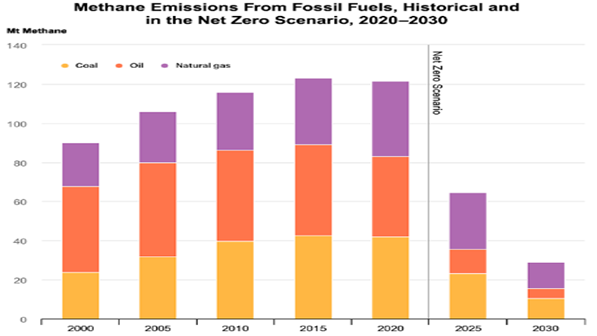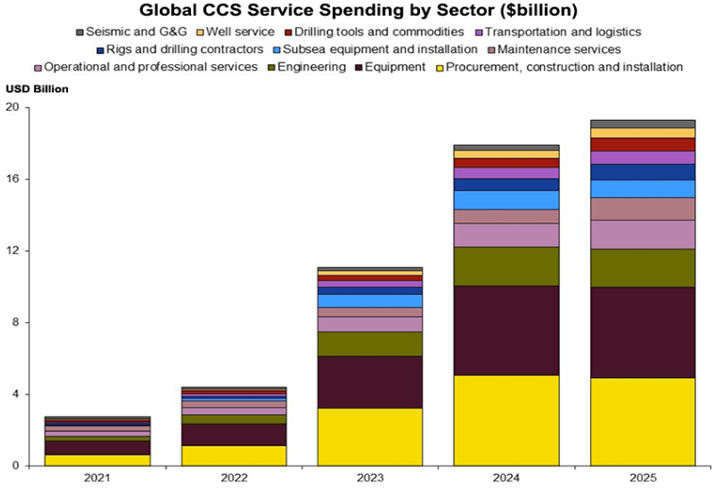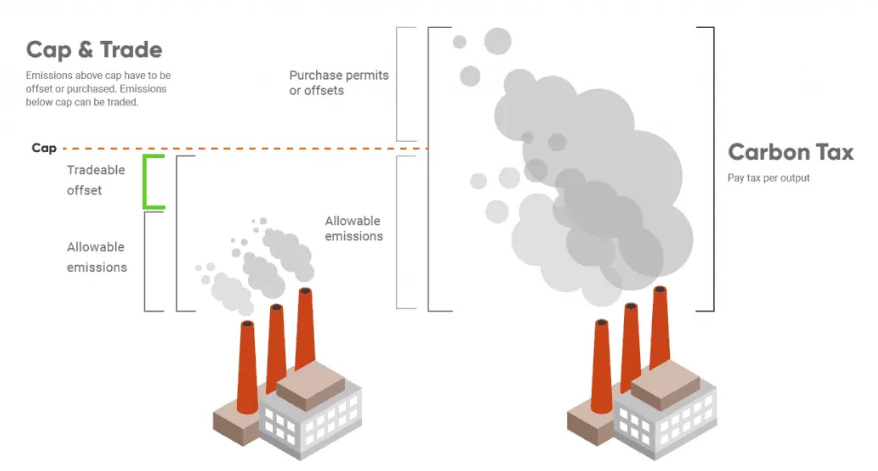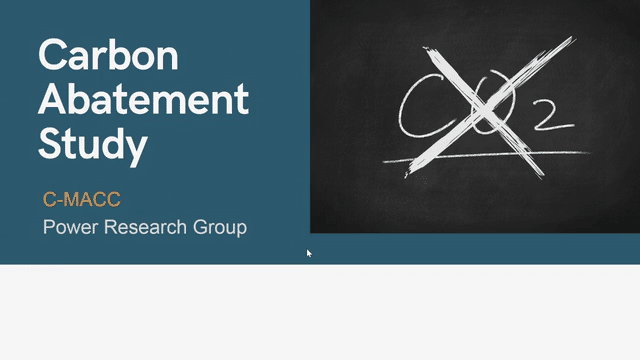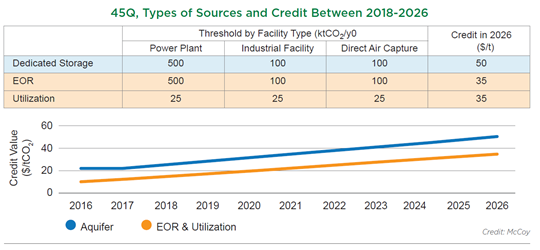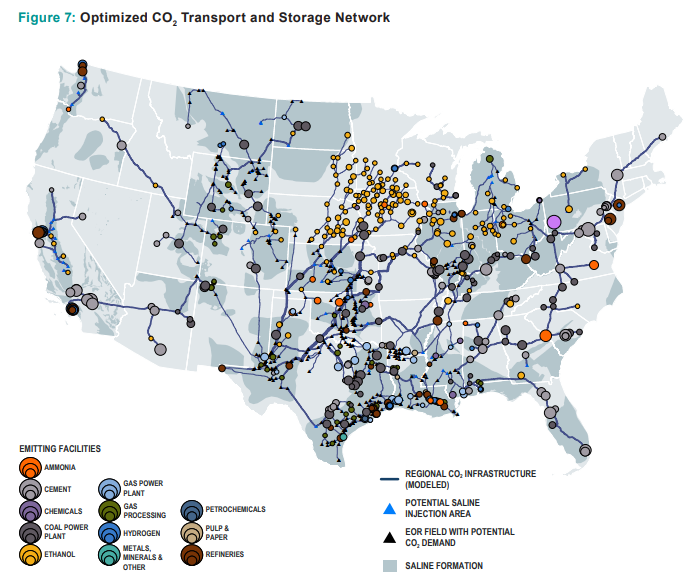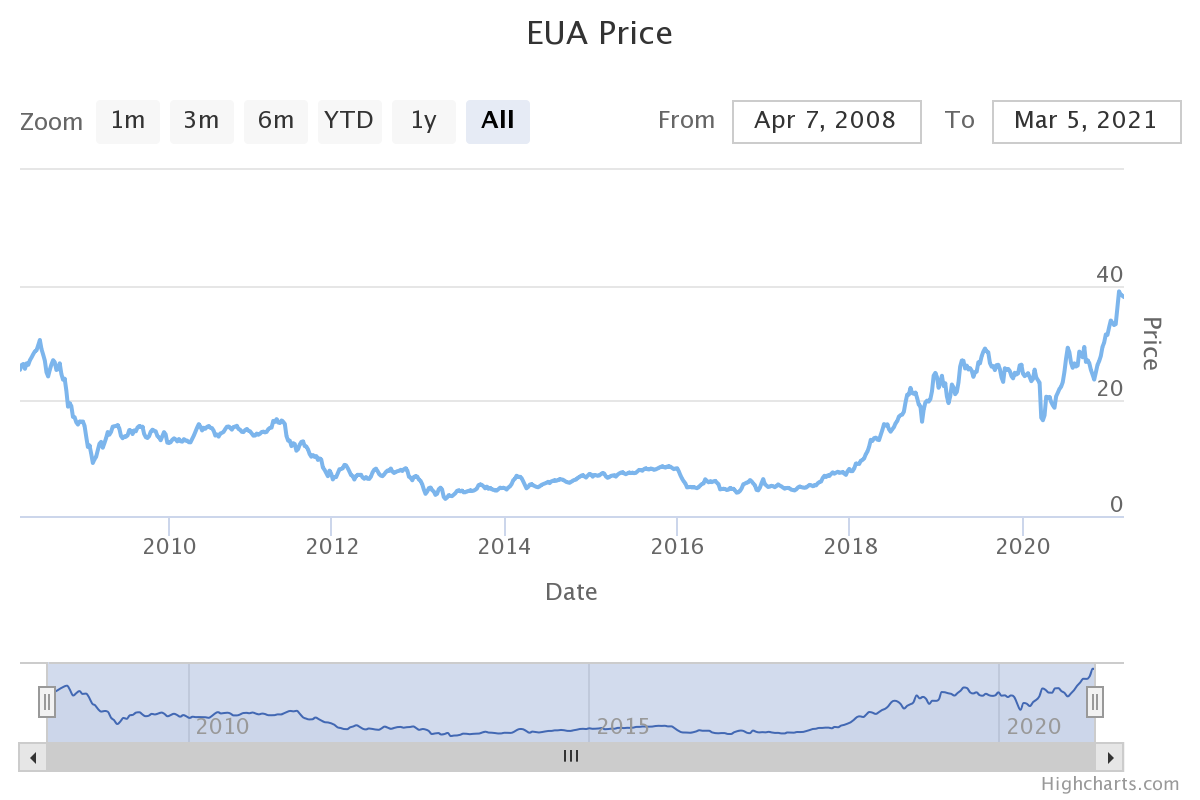Methane emissions are one of the more challenging carbon equivalent problems in part because it is lots of small emitters, associated with many thousands of wells and many thousands of miles of pipelines, rather than a large source of CO2 that can be eliminated with a specific investment. The API carbon tax, proposed last week, has a condition in the proposal that would prevent any other emission-based legislation for many years to evaluate the effect of the tax. This will not drive lower methane emissions unless it is a broad carbon “equivalent tax”, which could potentially drive a very punitive tax on methane and would get an almost instant response from those that own the wells and the pipes. Some of the abatement solutions are easier than they first appear and all pipeline operators should look at the technology offered by Pipeotech, for example. Wellhead emissions are more problematic but not beyond the engineering skills that exist within the major E&P companies. The harder problem is what to do with emissions from abandoned wells – here the tax idea would not work as there is no one to pay the tax and a fairly complex financial structure would be needed to encourage someone to take on the role of cleaning up these properties. That said, all these pathways will need to be explored to get to the targets outlined below.
A Carbon Tax Could Cut Methane And Carbon Emissions, But Not Quickly
Apr 29, 2022 3:31:19 PM / by Graham Copley posted in Carbon Tax, Methane, CCS, CO2, methane emissions, 45Q
A Boost For Carbon Capture: More Constrains For Renewable Power
Apr 27, 2022 12:25:06 PM / by Graham Copley posted in ESG, Carbon Capture, Climate Change, Sustainability, Carbon Tax, CCS, Blue Hydrogen, Renewable Power, Chemical Industry, decarbonization, Aemetis, renewable energy, clean energy, SAF, 45Q tax credit, Fulcrum Bioenergy
The CCS spending chart below is quite detailed, but shows the limited amount of spending in 2021 and 2022 and may underestimate the amount of seismic spending needed, especially in the US, as companies prepare permit applications. We do not expect to see much spending in the US before mid-decade beyond permit applications. However, as we discuss in today’s ESG and Climate report, should the API proposed carbon tax, or something similar, be additive to the 45Q tax credit, we could see a step-change in CCS when/if the tax is approved. The tax on its own is likely not enough to drive decarbonizing investment, but when added to 45Q it could be a specific trigger for CCS investment, and we could see a step-change in the second half of the decade. This might involve large-scale blue hydrogen production, especially on the Gulf Coast to decarbonize the refining and chemical industries.
Everyone Is Pushing For A US Carbon Policy, Except Congress
Mar 24, 2022 2:54:22 PM / by Graham Copley posted in ESG, Climate Change, Sustainability, Carbon Tax, CO2, Carbon Price, Emission Goals, Inflation, Chemical Industry, Net-Zero, decarbonization, Dow, carbon abatement, carbon emissions, carbon pricing, nuclear power, WPC
There was a very strong focus at the WPC on the need for carbon pricing in the US to facilitate investment decisions around many initiatives focused on carbon abatement. The consensus was very much that a carbon price – so a cap and trade system like they have in Europe – was the best mechanism, and far more likely to drive action and limit inflation than a carbon tax. This is something that we broadly agree with but the US is a bit late to the game and the right caps need to be set so that CO2 prices don’t languish at very low levels for years, as they did in Europe. Jim Fitterling of Dow was somewhat provocative in his comments around nuclear power, but we see this as part of a broader initiative aimed at getting a serious dialogue moving around how we make the practical steps needed to drive carbon lower. Nuclear power provides stable baseload and is carbon-free – a small modular nuclear reactor could generate enough steam and enough power to drive the decarbonization of major chemical complexes – one investment for example could transform one of the larger Dow sites. If we are going to get to net-zero targets without nuclear, we need much more progressive policies – especially around carbon pricing – which is likely the direction that Dow would like to take the discussion.
Carbon Abatement – A Multi-client Analysis
Jul 7, 2021 1:01:06 PM / by Graham Copley posted in ESG, Carbon Capture, Climate Change, Carbon Tax, Carbon Fuels, CCS, CO2, Renewable Power, Carbon, Carbon Neutral, Emission Goals, Net-Zero, decarbonization, carbon footprint, ESG Fund, carbon dioxide, carbon credit, carbon value, carbon abatement, power, carbon cost, carbon offset, offsets, ESG investment, carbon emissions, clean energy, climate
A major initiative by C-MACC in collaboration with the Power Research Group
Fairness & A Step Change In Investment Could Come From Revised CCS Bill
Jun 25, 2021 1:01:59 PM / by Graham Copley posted in ESG, LNG, Carbon Tax, CCS, Blue Hydrogen, CO2, Sequestration, carbon abatement, US Government, 45Q carbon credits, LCFS credit, tax credit, blue ammonia
Senator Cramer’s proposed Bill to increase the value of the 45Q carbon credits for sequestration and use as well as remove the annual cap could be a game-changer in many ways. The threshold removal is necessary regardless of the credit value. In our view, the cap creates a potential competitive disadvantage for smaller companies competing with larger ones, especially in the chemical space. Should the Bill increase the tax credit enough to drive real investment in abatement but not remove the threshold we would expect to see litigation from smaller disadvantaged companies. The chart below shows the current expectations for 45Q. To date, the only real investment activity we are seeing is around sequestering CO2 from ethanol production in the US. This is because the CO2 stream is easy to separate in a fermentation process and because some of the ethanol can benefit from the much higher LCFS credit if the fuel is sold into California.
Too Many New ESG Directives Make it Hard to Motivate Staff
Mar 18, 2021 1:55:32 PM / by Graham Copley posted in ESG, Carbon Tax, biodiversity
We note the Blackrock headline below about protecting biodiversity among other things and relate this to a section we wrote in yesterday’s ESG and Climate piece around carbon taxes and staff motivation. Companies are being asked to do too much and address too many issues at once that do not have empirical frameworks:
- Lower your environmental footprint
- Reduce waste
- Increase diversity
- Become more sustainable
- Protect the natural environment
- Oh, and while you are doing it, increase shareholder value!
In response, PR savvy companies are making broad statements around intent, even if they are not sure what to do next or whether it can be measured and valued. In extreme cases, these statements of intent, especially if they are very selective in the data they use or the topics covered, increase the chances that companies get accused of “greenwashing” – note the Chevron news this week and our comments in the report linked above.
But there is a further problem that will be causing major headaches in many companies – how do you motivate staff. Energy, Industrial and Materials companies are under fire, and while some may be putting on a brave and collaborative external face, internally they all have problems, as staff (at all levels) are confused – they see their industry and therefore their jobs at risk and they see new intangible objectives being imposed in the press and in some cases by shareholders that they have no experience and/or no idea how to fix. Plus – there are now too many issues to address and the likelihood that none gets the necessary focus and all fall short is very high. Everything in the list above is important, but there will only be a handful of standouts who over the next 5 years make enough progress on all fronts, and the more progressive management teams in the eyes of the press and the shareholders cannot afford to take their eyes of staff, who they might unconsciously be alienating through their public stance, but without whom they will not be able to get anything done.
As we discussed yesterday, a carbon tax, might be unpopular with politicians, but if I am the CEO of an energy or chemical company, the imposition of something tangible gives me something to rally the troops around. Intangible is much harder and setting tangible internal goals without a tangible external frame of reference other than “do better”, is much harder.
Just taking one example, the map below shows the level of CCS pipeline infrastructure that the US might need for an optimal carbon sequestration model. Almost none of this exist today, but a carbon tax could rally employees around new objectives associated with this.
Source: Carbon Capture Coalition, March 2021
A US Carbon Tax – How Aligned Would the API be with Something That Worked
Mar 8, 2021 11:19:22 AM / by Graham Copley posted in ESG, Carbon Capture, Climate Change, Carbon Tax
The API is suggesting that it would support a carbon tax in the US, but at the same time is suggesting that this would only be supported if it was the only mechanism that regulators used at a Federal level. While both Europe and California have carbon taxes, they have many other regulations and mechanisms to help lower emissions, such as credits for EV use and LCSF in California.


